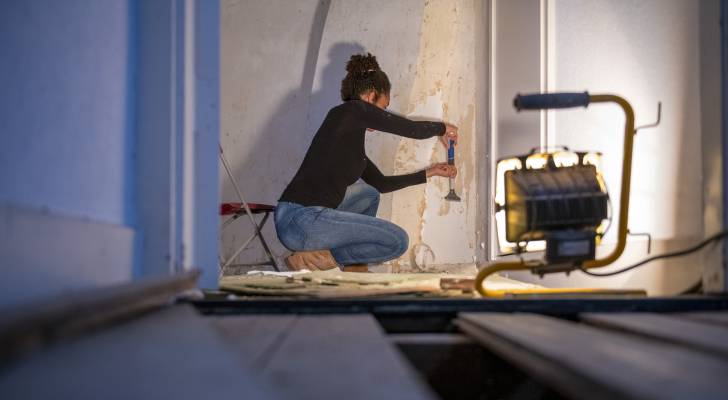
As homeowners, we’ve all likely been hit with a crazy high utility bill during peak winter and summer. In fact, U.S. households recently faced average natural gas bills of $602 per month during the past winter.
You can cut those costs by retrofitting your home with efficient upgrades, like adding insulation, sealing gaps and heat pump water boilers. Fortunately, a federal tax credit might help offset those expenses.
Don’t miss
- I’m 49 years old and have nothing saved for retirement — what should I do? Don’t panic. Here are 5 of the easiest ways you can catch up (and fast)
- Gain potential quarterly income through this $1B private real estate fund — even if you’re not a millionaire. Here’s how to get started with as little as $10
- You’re probably already overpaying for this 1 ‘must-have’ expense — and thanks to Trump’s tariffs, your monthly bill could soar even higher. Here’s how 2 minutes can protect your wallet right now
That’s exactly what worked for Megan Moritz, a Chicago homeowner who recently received a tax break after upgrading her home for better energy efficiency. After purchasing her 1930s dream home, she soon learned it came with all the 1930s-era insulation problems.
Moritz spent around $5,700 on retrofits and saw a big payoff: a much warmer house and a heating bill slashed in half. “The biggest perk to me, honestly, was not freezing my butt off,” Moritz told CNBC. “Then it was the monthly bill going down as much as it did.”
Even better, she was able to claim those expenses on her taxes, which gave her a $1,200 credit. That financial relief made the investment even more worthwhile.
This tax break — called the Energy Efficient Home Improvement Credit — is used by millions of homeowners to insulate drafty homes or upgrade to energy-efficient appliances. It’s a part of a broader push to cut greenhouse gas emissions and prevent another 1970s-style energy crisis. While upfront costs can be a barrier, the credit helps by covering up to 30% of the cost of eligible projects.
Is the rebate here to stay?
The extremely popular tax credit, which American homeowners claimed $8.4 billion of in 2023, has been extended through 2032 by the Biden administration’s Inflation Reduction Act. But for those planning future upgrades, its lifespan may be threatened by the Trump administration, which has pledged to cut IRA spending.
As Republicans search for ways to fund a $4 trillion tax cut package, the home improvement credit could be at risk. Freezing IRA funds was one of Trump’s first executive orders for this presidency.
“There is a risk in the current budget bill that these credits would be changed or go away completely,” said Haas Energy Institute economist Lucas Davis, who has written on the history and use of the energy credit.
A group of congressional Republicans is siding with Democrats to keep the credit alive. With slim margins of Democrats to Republicans in both the House and Senate, it may still have a fighting chance.
If the federal tax credit does get slashed, check whether your state or local government offers energy rebates. The Department of Energy provides a rebate search tool, and the NC Clean Energy Technology Center maintains an online database of state energy incentives.
Read more: Want an extra $1,300,000 when you retire? Dave Ramsey says this 7-step plan ‘works every single time’ to kill debt, get rich in America — and that ‘anyone’ can do it
Retrofitting your home
Whether or not you’re able to get the energy tax credit, making energy-efficient upgrades to your home is good for the environment and your wallet.
If you’re like Moritz and live in a house that’s nearly 100 years old, there are several ways to improve energy efficiency without compromising its historic charm.
Insulation: Attic insulation is often a high-priority, yet cost-efficient upgrade for older homes. It can lower heating and cooling costs by 15%, and it’s generally easier and more affordable to install than wall or floor insulation.
Upgrade your furnace or boiler: In older homes, the heating system may also be outdated. Replacing it with a 95% efficiency model could save you up to $525 per year. You might also save $300-800 annually on parts, repair and boiler maintenance by upgrading to a newer system.
Start small: If big-ticket improvements aren’t in your budget right now, start with low-cost changes — like switching to LED lighting, gradually upgrading to ENERGY STAR appliances and using power strips to reduce phantom energy use when electronics are idle.
Energy audits: Many utility companies and local governments offer free or discounted energy audits. These professional evaluations help identify areas of energy waste and provide a plan for increasing efficiency.
What to read next
- Millions of Americans now sit on a stunning $35 trillion in home equity — here’s 1 new way to invest in responsible US homeowners while targeting a 14%-17% IRR
- Robert Kiyosaki warns of a ‘Greater Depression’ coming to the US — with millions of Americans going poor. But he says these 2 ‘easy-money’ assets will bring in ‘great wealth’. How to get in now
- Here are 5 ‘must have’ items that Americans (almost) always overpay for — and very quickly regret. How many are hurting you?
This article provides information only and should not be construed as advice. It is provided without warranty of any kind.